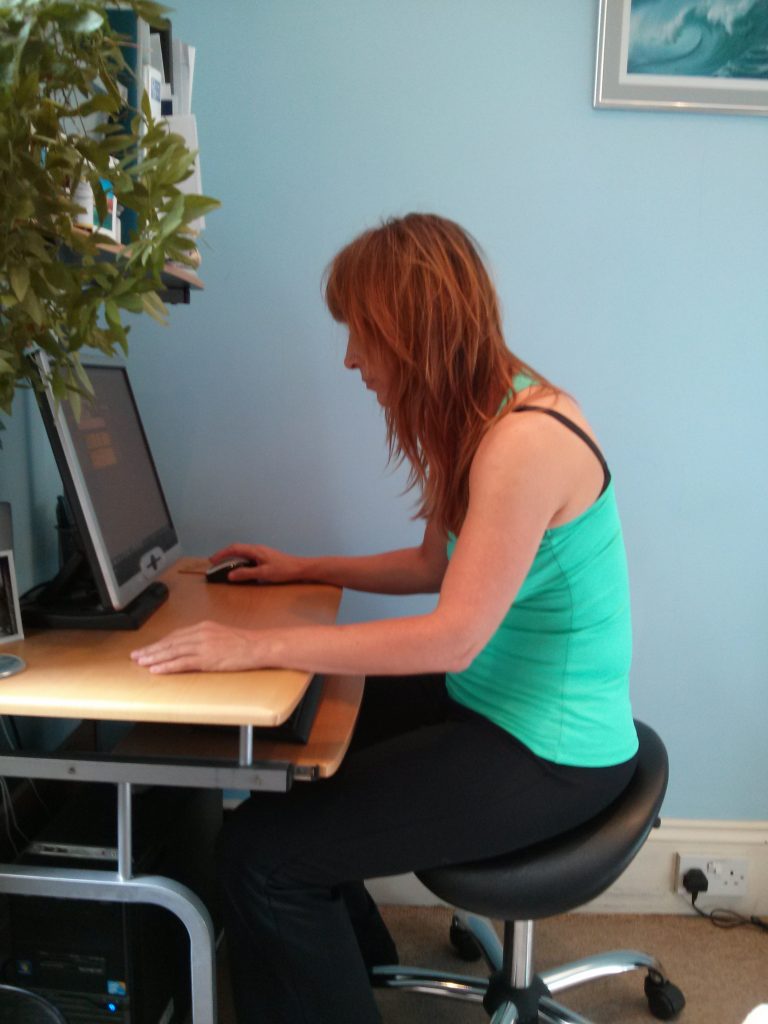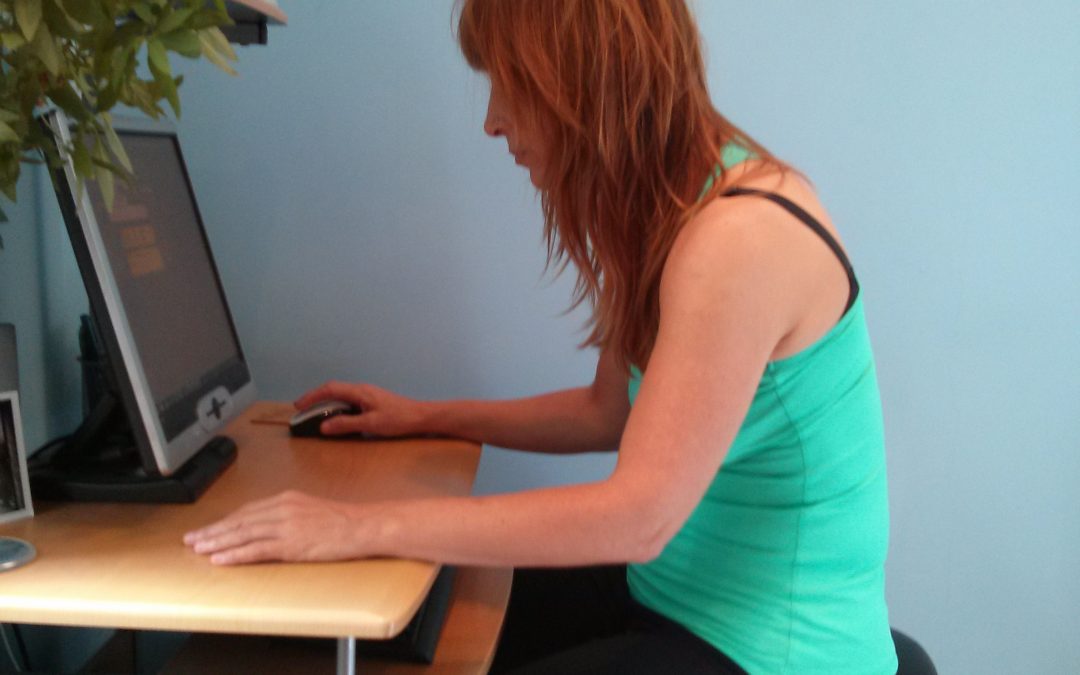The sun is shyly showing it’s face and we are venturing outside more frequently. I figure this is an optimal time to attempt to get you interested in a good exercise routine to improve poor posture and counter back pian and headaches and Upper Cross Syndrome. This will be especially beneficial for all those office workers or anyone spending a lot of time in front of a computer but to be honest, I can’t think of anyone who wouldn’t benefit from this exercise. Also, the great thing about the Brugger exercise, IT ONLY TAKES 10 T0 15 SECONDS, however, it needs to be frequently.
This seems to be the posture of our age

I’ve talked about this posture before; the head is carried in front of the body, the shoulders are rounded forward and raised (and possibly worn as earrings;)). In this postition the chest is closed. It can possibly indicate emotional protection and it definitely indicates shallow breathing. This posture is also known as Upper Crossed Syndrome.
It usually accompanies upper back (thoracic) pain/stiffness, neck pain/stiffness, cervicogenic headaches and many times, low back (lumbar) pain. This posture also affects your breathing, encouraging excessive use of accessary breathing muscles (that should only be used under times of physical stress) of the neck and shoulders instead of using your diaphragm. I have previously written a whole blog on this condition, complete with exercise videos on how to improve posture and counter this Upper Cross Syndorme to which I have recently added further videos. So please feel free to follow this link to read the updated version.
Now let’s get on with the ‘how to improve poor posture’ of this exercise
You can do this exercise either seated or standing. I think it is easier at first to do it seated. Your posture before you start the Brugger is of upmost importance so check out the video in case my written instructions are not clear enough:
Seated
- Sit perched towards the edge of your seat; this will naturally place your lower back into a curve (lumbar lordosis) with your butt sticking out a little. As you do this your breastbone (sternum) will naturally lift up.
- Separate your legs to 45 degrees each side with your feet turned out slightly and in line with your knees
- Your shoulders are relaxed and down with your chin tucked in, making the back of your neck longer – imagine a piece of string is attached to the top of your head and someone is lifting you up.
- Fully straighten (extend) both elbows. Make sure you keep your shoulders down and imagine your shoulder blades [scapula] are pushing together and down into a V.
- Turn your thumbs out (externally rotate), palms turning out.
- Separate your fingers.
- Hold for 10 – 15 seconds. Repeat 2-3 times per hour.
Standing
- Stand with legs slightly apart; feet in line with hips.
- Find a neutral pelvic position; you can do this by finding the centre between the extreme of tilting your butt out and then tucking your tail under. As you do this your breastbone (sternum) will naturally lift up.
- Your shoulders are relaxed and down with your chin in making the back of your neck longer – imagine a piece of string is attached to the top of your head and someone is lifting up.
- Fully straighten (extend) both elbows. Make sure you keep your shoulders down and imagine your shoulder blades [scapula] are pushing together and down into a V.
- Turn your thumbs out (externally rotate), palms turning out.
- Separate your fingers.
- Hold for 10 – 15 seconds. Repeat 2-3 times per hour.
For those of you that like it – the science bit!
This clever exercise was developed by a Swiss Neurologist, Alois Brugger MD and the ‘science bit’ is throughout Janda’s work, who first named Upper Cross and Lower Cross Syndromes.
This exercise is clever exercise to improve poor posture because it’s not your usual straight stretch or strengthening exercise; it works neurologically and does both in a way that is complementary to the way your body is wired to work.
Our bodies are neurologically much stronger in all of our flexor muscles. This is displayed perfectly if we look at a person with a neurological disorder, e.g. cerebral palsy; their body naturally has increased tension (hypertension) in the flexor muscles, also known as the spastic posture. This demonstrates our natural prosperity to an Upper Cross Posture.
Now muscles work in groups. When one group is working then the opposing group of muscles are unable to work (inhibited). An easy example to visualise this is when you place food in your mouth. To do this you flex your fingers, wrist muscles, bicep muscles and pecs., all flexors. However, to be able to do this you have to inhibit your finger extensors, wrist extensors, triceps, rhomboids etc. This is called reciprocal inhibition. If you were unable to do this you would be unable to feed yourself.
The Brugger exercise works on the principal of reciprocal inhibition. When doing this exercise you are activating all your extensor muscles and therefore inhibiting all of your (usually hyper activated) flexor muscles, resulting in improved posture. Clever or what?
Take a Brugger Break
If you are a patient of mine, you have probably heard me say the following; regardless of what chair you have at work, one of the best things you can do to counter back/neck pain from sitting in front of a computer is to stand up, walk around your chair and sit down again and to do this every 20 to 30 minutes. Please add the Brugger exercise to this healthy habit. It only takes 10 – 15 seconds and will reduce tension, improve breathing and improve posture. However, you do need to do it frequently; once an hour would be perfect! The best way to remember to do this is to put a reminder/alarm on your computer/phone.

